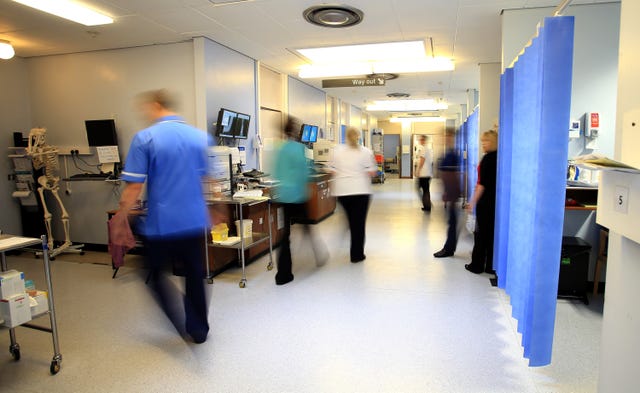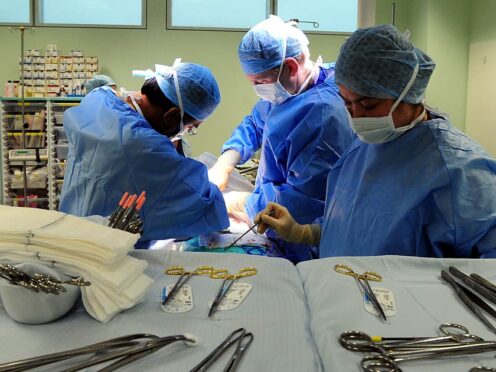Patients who are given lung transplants are to be given “skin patches” from their donor to help medics spot organ rejection faster.
Scientists are investigating whether these patches can be used as an “early warning system” to identify lung rejection.
Experts said that skin rejects earlier than other organs and can be easily seen at all times.
If a rash appears on the skin patch – which is surgically inserted into the skin of a patient’s forearm – it indicates rejection, which will help doctors to try and prevent the lung from also rejecting.
As well as spotting rejection, it is also hoped that the skin patches will help medics work out when the transplanted organ is working as it should.
Scientists hope that eventually the use of the skin flaps will reduce the number of hospital visits and tests for patients and could even help to guide reductions in immunosuppressant drugs – the medicine taken after a transplant to dampen down the body’s immune system to stop it attacking the “foreign” organ.
It is expected that 152 patients will be recruited to the £2 million Sentinel trial over the next three years.
The study follows success in a similar trial for patients who received intestinal transplants. Researchers found that skin displayed a visible rash between one and 10 days before the transplant was rejected.
They also found that patients who received skin flaps from their donors had a much lower rate of organ rejection.

The latest trial is being run by the Surgical Trials Units at the University of Oxford in collaboration with NHS Blood and Transplant.
The transplants will be carried out by the lung transplants teams at specialist cardiothoracic centres across England.
Patients involved in the trial will receive a skin patch from the forearm of the organ donor, measuring at 10cm by 3cm, which will be transplanted onto the under-surface of the patient’s forearm by a plastic surgeon at the same time as the lung transplant.
Fiona Ballantyne is on the waiting list for a lung transplant after being diagnosed with pulmonary arterial hypertension in 2019.
The 56-year-old, from Camelon, Falkirk, applied to join the trial and said that if it is a success it would be a “momentous moment for transplant recipients”.
She added: “The opportunity to potentially be able to see if your organ is rejecting just by looking at your arm is huge for those of us who are facing transplants.
“Not only because of the fact we could receive treatment earlier than if we didn’t have the patch but also for the peace of mind it would offer, being able to consult the skin patch whenever we feel under the weather.”
Adam Alderson, 44, from Wensleydale, received a skin graft as a part of a multi-organ transplant in 2015, which helped identify signs of rejection.
He added: “Rejection is one of an organ recipient’s biggest fears. Being able to quickly and easily identify if any rejection is occurring is an incredible thing to be able to do, so if the trial is successful and it can potentially work for a large number of transplant recipients, it could be groundbreaking.
“My abdominal wall graft has shown rejection three times, allowing it to be quickly treated.
“It’s a really comforting thing to have – I feel safer knowing that I have a tool available to tell if something is going wrong before it becomes too serious. It’s almost like an oil warning light on your car.”
Henk Giele, chief investigator and associate professor of plastic, reconstructive, transplant and hand surgery at University of Oxford, said: “Lungs are prone to rejection due to their exposure to outside air and high propensity to infection.
“It is often difficult to know if a reaction is caused by infection or rejection as they look the same at the early stages, but the treatments for each are completely opposite.
“It’s for this reason that we have focused the Sentinel trial on the lungs – a visible warning system like this is crucial for all transplants, but especially those with higher rejection rates.”
Emma Lawson, research lead at NHS Blood and Transplant, said the organisation was “honoured” to support the trial by “matching suitable patients for the retrieval and transplant and via our specialist nurses in organ donation, who will work with the generous donor families to secure the extra consents needed”.
– The study is being funded by a Medical Research Council (MRC) and National Institute for Health and Care Research (NIHR) partnership.
